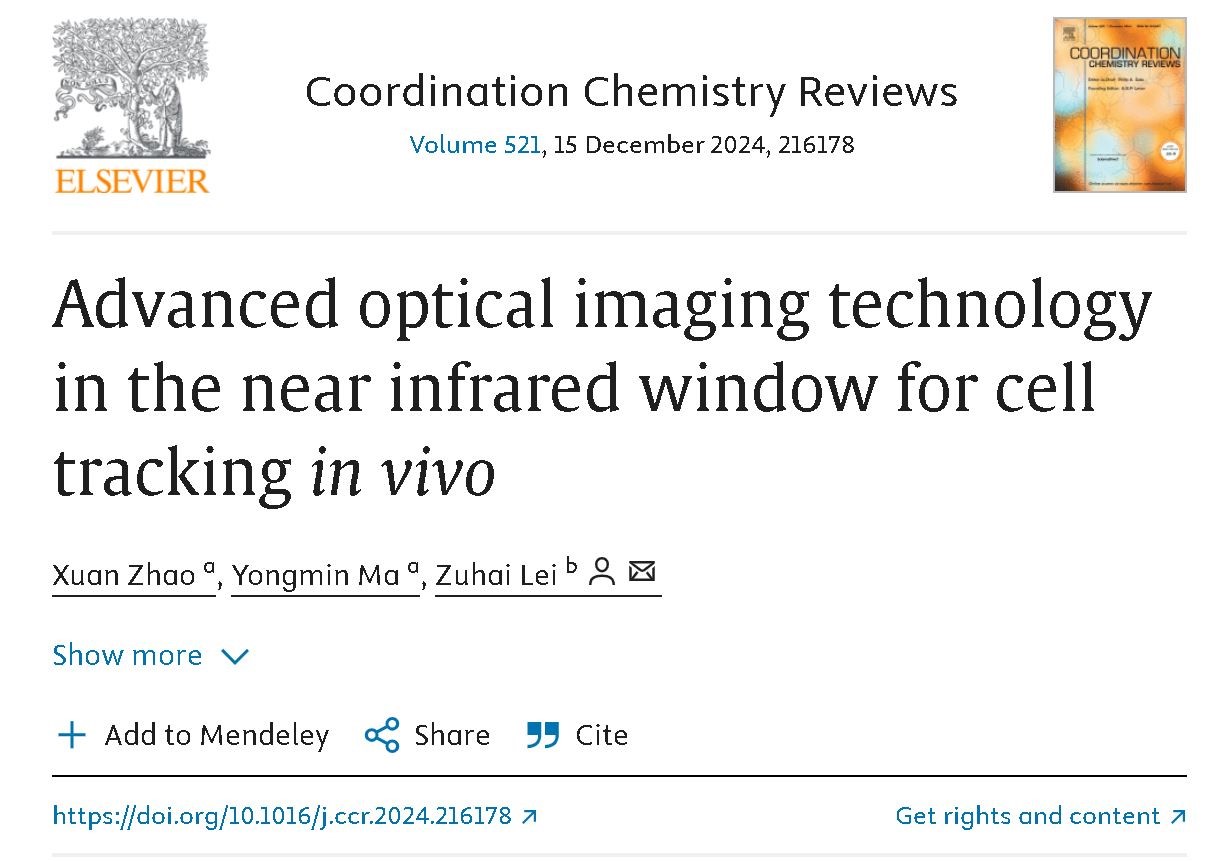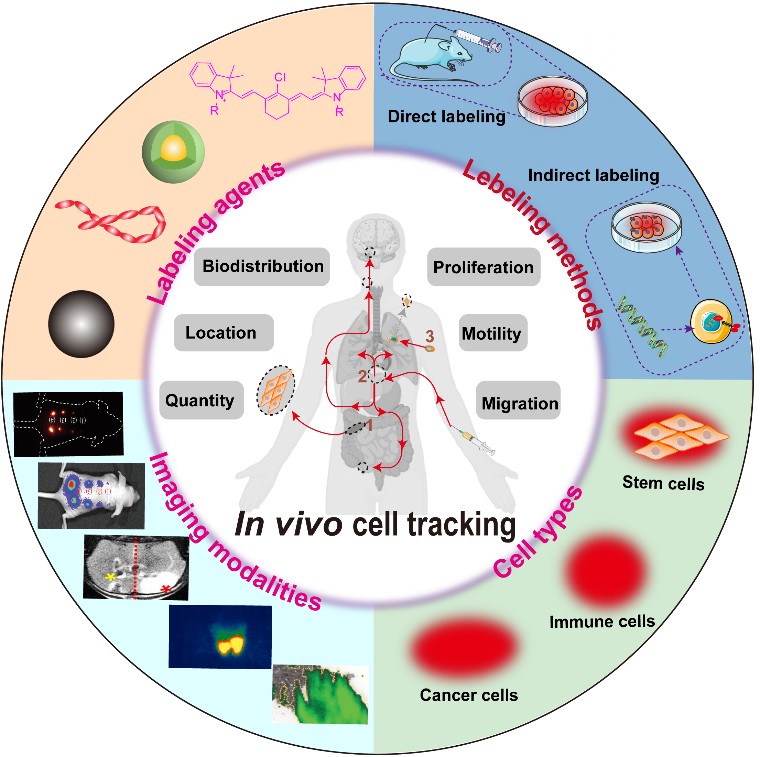Recently, Dr. Zhao Xuan from TU’s School of Medicine has published a review article titled “Advanced Optical Imaging Technology in the Near Infrared Window for Cell Tracking in Vivo” in the internationally authoritative journal Coordination Chemistry Reviews (a top journal in the Category 1 of SCI Chemistry, IF: 20.3). TU is the first completion unit, Dr. Zhao Xuan from the School of Pharmaceutical Sciences is the first author of the paper, Professor Ma Yongmin participated in the guidance of the related work, and Professor Lei Zuohai from the School of Pharmaceutical Sciences at Yunnan University is the corresponding author.

Paper frontpage
In recent years, cell therapy in the field of modern biopharmaceuticals has experienced rapid growth. Real-time tracking and detection of the fate and function of transplanted cells in vivo are crucial for predicting and evaluating the efficacy of cell therapy and exploring the physiological and pathological processes of biological systems. Non-invasive in vivo cell tracking technology is an emerging imaging method that can be used for in vivo cell tracking and detection, providing an effective approach for directly exploring the physiological processes and pathological mechanisms of cells in biological systems. Near-infrared optical imaging (NIR, 700-1700nm) is considered to have the most potential for application in the field of modern biomedicine in basic research and clinical practice due to its various inherent advantages, such as high sensitivity, high spatiotemporal resolution, real-time imaging, low cost, and no ionizing radiation.

Diagram of Live Cell Tracking
In this review, the authors systematically and comprehensively elaborated on the biological applications of near-infrared optical imaging technology for in vivo cell tracking and detection.
First, the authors discussed the key parameters of cell optical labeling reagents that affect the clarity and resolution of in vivo cell tracking and imaging, such as cell labeling brightness, chemical stability, photostability, tissue penetration depth, and biocompatibility. The authors also comprehensively analyzed the existing problems with optical cell labeling reagents and discussed the strategies and methods for improving labeling efficiency.
Next, the authors further discussed the experimental processes and principles of the currently widely used direct and indirect cell labeling methods. They also summarized the advantages and disadvantages, as well as the application scope, of these two labeling methods in biopharmaceutical applications.
Then, the authors focused on introducing representative examples of using various near-infrared optical imaging technologies for in vivo cell tracking and imaging in different types of cells. The authors summarized and analyzed the advantages and disadvantages of near-infrared fluorescence, bioluminescence/chemiluminescence, photoacoustic imaging, Raman imaging, nuclear magnetic resonance imaging, and radioactive imaging technologies. They then focused on summarizing the application of these imaging technologies in tracking and studying stem cells, immune cells, cancer cells in different animal disease models, providing opportunities and possibilities for predicting and evaluating the therapeutic efficacy of cell therapy, exploring physiological processes, and studying the pathogenesis of various diseases. The authors also objectively evaluated the value of this research and provided an appropriate outlook on its potential application fields.
Finally, the authors analyzed and discussed the challenges faced by near-infrared optical imaging technology for cell tracking and imaging, as well as future research directions and application potentials. They further explored the potential and opportunities for advanced optical imaging technology in cell tracking and labeling in areas such as glucose metabolism, multiplex cell tracking and detection, multimodal imaging, and in situ in vivo cell labeling and tracking.
Full text link:
https://www.sciencedirect.com/science/article/abs/pii/S0010854524005241
Coordination Chemistry Reviews was founded in 1966 and is currently one of the authoritative comprehensive academic journals in chemical sciences. It is published by Elsevier and focuses on publishing critical reviews on metallo-organic chemistry, supramolecular chemistry, theoretical chemistry, bioinorganic chemistry, material chemistry, and other important fields related to coordination chemistry.